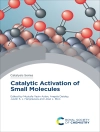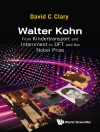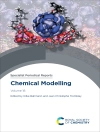Molecules have for a long time been of central importance in chemistry as the basis on which all new products and materials have been designed, developed and interpreted. Since the discovery and characterization of active biomolecules, biology has also been transformed into a molecular science. With the new developments of molecular devices, single-molecule spectroscopy, time-resolved x-ray diffraction and the study of mass-selected clusters in molecular beams, materials science and electronics may move in the same direction.
The understanding of molecules and the dynamics of their transition between isolated and assembled states rests on three pillars: structure, activity and function. Enormous progress has been made in the experimental study of molecules by diffraction and spectroscopic analysis, directed at all three of the basic aspects. In the process molecular scientists have developed efficient working models in terms of which to design and interpret their experiments. A vital feature of such models is an understanding of intra- and intermolecular cohesion and assembly, or chemical bonding. One challenging aspect is that the working models of chemistry are notoriously difficult to reduce to the fundamental theories of the physical sciences.
The Indaba 5 meeting, held in South Africa during August 2006, was aimed at the progress that is being made to achieve first-principle understanding of molecular science: structure and dynamics (that includes bonding), activity and function. An interdisciplinary international team of experts came together to document and to probe various aspects of these fundamental questions and their startling conclusions confirm the need for a fresh look at the physical sciences with a view to better understand the mysteries and magic of molecules.
This book explores the common ground to guide chemists, biologists, crystallographers, spectroscopists and theorists into a deeper recognition of their individual relevance towards painting a holistic picture of scientific endeavour. This effort to stimulate interest in multidisciplinary research is rare, if not unique.
Tabela de Conteúdo
Raman Spectroscopy.- X-Ray Diffraction of Photolytically Induced Molecular Species in Single Crystals.- Molecular Conformation and Crystal Lattice Energy Factors in Conformational Polymorphs.- How Guests Settle and Plan Their Escape Route in a Crystal.- Structural Determination Of Unstable Species.- Is Polymorphism Caused by Molecular Conformational Changes?.- Crystalline Amino Acids.- Unravelling the Chemical Basis of the Bathochromic Shift of the Lobster Carapace Carotenoprotein Crustacyanin.- Tiny Structural Features and their Giant Consequences for Properties of Solids.- Polymorphism in Long-Chain N-Alkylammonium Halides.- Mysterious crystallography.- Clusters in F-Phase Icosahedral Quasicrystals.- Protein-Protein Interactions in the Cyanobacterial Kaiabc Circadian Clock.- Protein-Protein Docking Using Three-Dimensional Reduced Representations and Based on a Genetic Algorithm.- Tropolone as Neutral Compound and Ligand in Palladium Complexes.- Theoretical and Experimental Models of Molecules Illustrated with Quantum-Chemical Calculations of Electronic Structure of H2CN2 Isomers.- Recurrent Complex Modules Instead of Molecules in Non-Molecular Compounds.- Models for Isomeric Bispidine Complexes – Accurate Prediction Versus Thorough Understanding.- The Ligand-Field Paradigm.- The Holistic Molecule.












